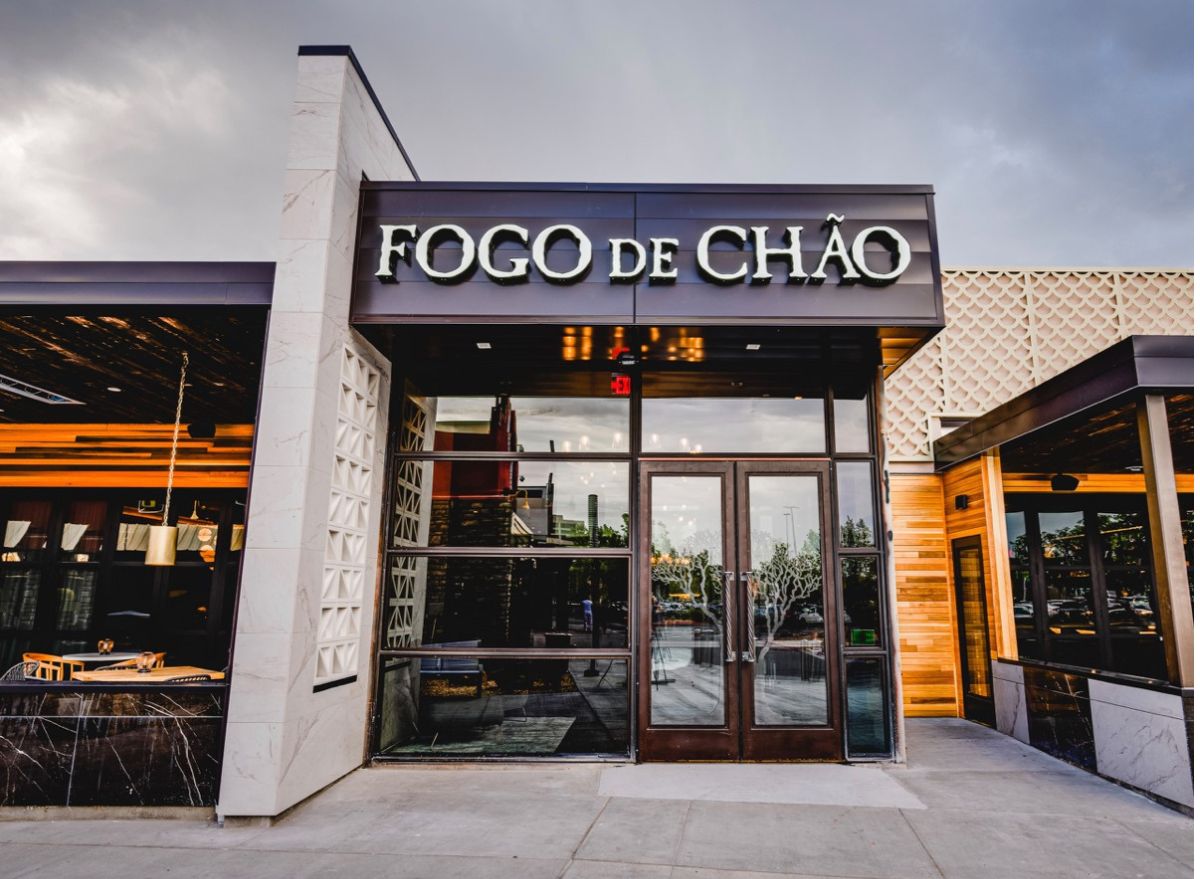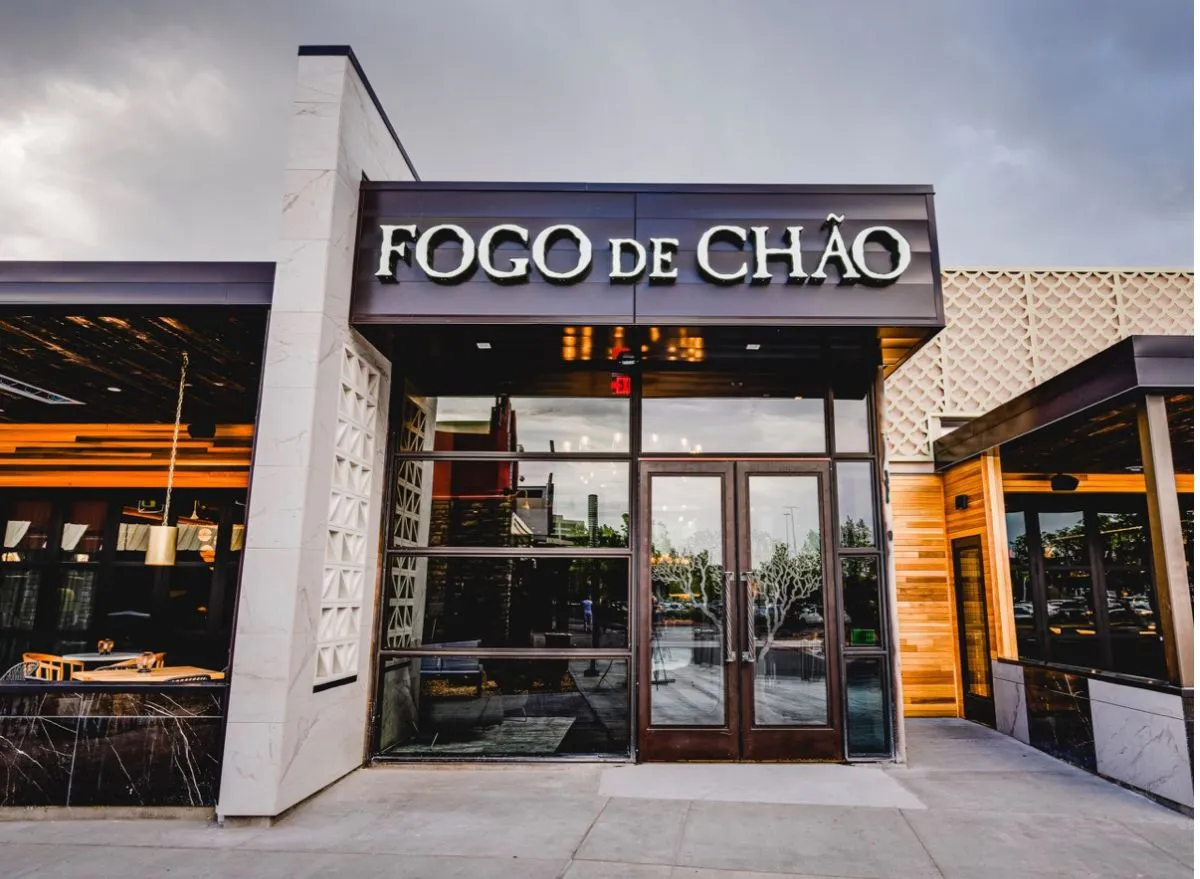
The product recommendations in this post are recommendations by the writer and/or expert(s)
interviewed and do not contain affiliate links. Meaning: If you use these links to buy
something, we will not earn a commission.
Fogo de Chão isn’t your typical steakhouse chain. Instead of the standard slab of beef and two sides, diners at the Brazilian-founded chain are treated to a seemingly endless parade of skewered, fire-roasted meats—pork, lamb, chicken, and virtually every cut of beef you can imagine, from filet mignon and top sirloin to a bone-in ribeye.
It’s all sliced fresh and served hot at your table, and it all comes for a single fixed price (a buffet of prepared fruits, veggies, soups, and salads is also included in the chain’s churrasco-style experience). The all-you-can-eat carnal barrage only stops when you say so.
If you’re feeling extra fancy—and really, really hungry—you can even upgrade your meal by ordering one of the restaurant’s “indulgent cuts” à la carte for an added price, such as the 32-ounce dry-aged tomahawk ribeye. Or, you can go all-out, and try the newest and most premium steak on the menu: a 30-ounce Wagyu porterhouse.
“The quality of this product is amazing,” says chef Antonio Iocchi, Fogo’s senior vice president of global food and beverage innovation.
Highly prized for its fat content, ultra-tender texture, and buttery flavor, Wagyu is probably the most coveted kind of beef on the planet right now, and commands a high price as a result.
Fogo has been serving Wagyu beef for several years now, beginning with a 20-ounce strip, followed by a 24-ounce ribeye. In just a short time, Iocchi says the fast-growing chain with 62 existing U.S. locations (and counting) became one of the biggest movers of Wagyu beef in America.
But, the new porterhouse is the largest and most expensive Wagyu cut the restaurant has served so far. The meat is imported from Australia. According to Iocchi, the quality is on par with Japanese A5 Wagyu, the top grade in Japan’s tightly regulated cattle industry. “It is definitely the highest-quality offering that we have,” he says.
READ RELATED: London Bleu Angel Height, Weight, Age, Body Statistics
Like Fogo’s other big-ticket steaks, the porterhouse is carved tableside, then presented on a heated Himalayan salt block that helps to keep the meat warm while you dig in.
On Wednesday, Fogo gave Eat This, Not That! an exclusive first taste of its massive new steak, which feeds four or more. Part-filet and part-strip with a hulking t-shaped bone in the middle, the porterhouse arrived nicely charred outside and glistening with juice, with a deep ruby red color on the inside. The meat visibly bubbled as it sizzled upon the salt block long after it was sliced. Exceptionally rich and juicy, it’s unquestionably one of the most tender and luscious steaks this reporter has ever eaten.
Available now for a limited time, the porterhouse is priced at $175 in New York City, but costs slightly less in other cities. Even so, Iocchi says it’s a good value for such a top-quality cut. “If you go to any other steakhouse, it will be in the $300 range,” he says, noting that Fogo can afford to charge less because of cost efficiencies achieved through the sheer volume of its Wagyu business.
With the holidays approaching, the chef believes that diners will be more inclined to splurge on a steak of such high caliber. “During the holidays, people maybe want to indulge a little bit,” he says. “It’s a special time of the year, so that is the perfect time for us to offer something like that at an incredible-value price for the quality of the product.”
The new menu item comes at a time of rapid expansion for the Dallas-based chain, which was acquired this past August by investment firm Bain Capital, according to Reuters.
Just this fall, Fogo opened two new locations in California with a third launching in the Bay Area town of Emeryville next week. It also opened a new restaurant in Irving, Texas, in October—the chain’s 80th location worldwide. Additional new restaurants in the pipeline are planned for Seattle, New York, Orlando, Fla., and Richmond, Va.
“We’ve been in a crescendo mode,” says Iocchi, who credits the chain’s booming popularity to the vastness of its all-you-can-eat churrasco program, which, at $60 to $75, can cost the same as a single steak at other upscale restaurants. “There’s no comparison with any other steakhouse.”






